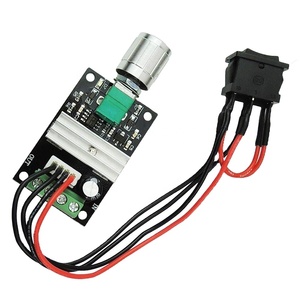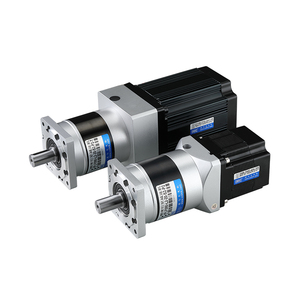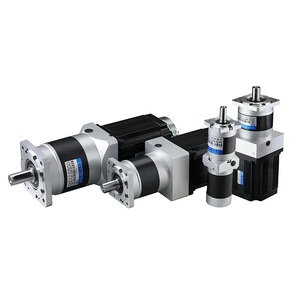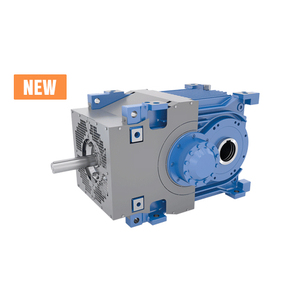
All categories
Featured selections
Trade Assurance
Buyer Central
Help Center
Get the app
Become a supplier

(4620 products available)












































Reversible dc motor speed controllers are for adjusting and controlling the speed of DC motors in various situations. This family of gadgets is crucial for effective and precise motor operations, hence finding relevance in sectors from manufacturing to robotics. Below is an outline of the various reversible DC motor speed controllers.
Reversible DC motor speed controllers may change the rotation direction of a motor by supplying an electrical signal with a certain mixture of positive voltage and negative voltage. In other words, it can make a motor turn either clockwise or counterclockwise, depending on the required operation and process.
Transistors or MOSFETs are mostly used to controlthebe the speed and direction of the DC supply voltage. For example, 12–volt reversible DC motor speed controllers would control the speed and direction of 12V DC motors. These controllers are vital in motor drive systems where different rotational operations are needed.
Mechanical speed control is basic and very different from electrical speed control. A mechanical reversible DC motor speed controller attains speed variation by changing the belt or gear connection that drives the electric motor. It does not have any electric components for controlling the speed. The speed control components are strictly mechanical parts such as gears, beltscene, pulleys, friction wheels, and mechanical brakes.
Those folks buying reversible DC motor speed controllers from wholesale suppliers need to know the crucial factors that drive these machines' functionality, reliability, and effectiveness.
The main advantage of these controllers is their precise speed control. The speed can be altered smoothly to any desired value, from low-speed ranges to high-speed ranges. This feature is very important when doing processes where precise speed application is crucial for product consistency.
As was mentioned earlier, DC motor speed controllers can control or change the direction of the motor's rotation, providing positive and negative commands or signals. This characteristic is referred to as two-quadrant operation because of the functionality it exhibits. Two-quadrant operation makes it possible for the controller to regulate the motor's speed in both forward and reverse directions.
When the output of the speed controller has large ripples, the motor experiences jerks and shocks, and this affects the normal working of sensitive systems. Therefore, using controllers with low ripple output provides smooth and stable motor operation.
The efficiency of Reversible DC motor speed controllers is another important factor.Itemshighlyratedhighlyefficiencyrated items consume less energy, which means less heat generation and loweroperatingcostsoperatingcosts. Efficient controllers ensure that the maximum power output from the motor is reached without wastage.
Know the common applications of these reversable DC motor speed controllers to help one make the right decision.
These controllers are mainly used in robotic systems to control joint movements, wheels, and other robotic parts. A precise and reversible speed is needed for robotic applications to ensure the motor gives a desired torque output with instability.
Reversible DC motor speed controllers are used in conveying systems, fans, pumps, and other moving parts in industrial automation and control systems. It controls the speed and direction of these motors to enhance process efficiency.
"Transportation systems like electric vehicles and railways use reversible DC motor speed controllers. These controllers ensure the drive motors rotate and provide smooth acceleration and deceleration and the maximum torque output during the braking process."
Speed controllers in the leather sector regulate the motors driving sewing and cutting machines. Controlling the motor's speed and direction helps increase work and provide the needed precision for different leather product manufacturing tasks.
The metallurgical industry requires accurate motor control during ore processing, metal extraction, and other related activities. In this case, Reversible DC motor speed controllers enable smooth motor operation, enhancing process effectiveness and safety.
These are used in agricultural machinery, such as electric tractors and other farming implements. The controllers help control the motors driving the wheels and other mechanisms to ensure efficient and reversible operation in farm applications.
Operational Voltage Range
The operational voltage measurement range of the reversible dc motor speed controller concerns the voltage range within which the controller operates well. Controllers are made to handle diverse voltage requirements in various applications, such as industrial and vehicle systems.
Speed Control Range
The speed control range is the interval of the lower and upper speeds that can be controlled by the controller. A wide range of control ensures that the controller can be applied in diverse situations where low and high speeds are crucial.
Power Rating
Power ratings in these items are very crucial. The motor these controllers power must be rated with a corresponding power rating. Going for a controller with a higher power rating than needed by the motor will lead to inefficiencies and a short lifespan to the system.
Feedback Mechanism
"Most speed controllers have feedback systems like tachometers or encoders to keep speed control accurate. The feedback feature enables the controller to get and compare speed information, then ""correct"" itself to maintain the setpoint speed."
The installation of reversible DC motor speed controllers may slightly differ depending on the model and application. However, like most electronics, a wiring setup connects the power supply, motor, and control system. Higher or lower installations may require additional calibrations.
Maintenance is also crucial for these controllers as well, as it helps the system control motor operations effectively. Regularly checking and cleaning the electrical connections is one way to maintain the system. The user should also ensure there is no dust or debris around the area because that will affect the performance of the system. Firmware updates should be done where applicable to enhance performance and rectify issues.
Varying reversible DC motor speed controllers come with diverse customization options to fit various applications. Standard customization options are the operational voltage, speed control ranges, and command interface.
There are several things buyers should pay attention to when buying a Reversible DC motor speed controller.
These controllers are meant to control DC motors. However, there are brushed and brushless DC motors, and there are different types of controllers for each one.
Every speed controller system has an operational voltage range, so opting for one that fits the motor's operational voltage range is very important. Using an unsuitable controller with low or high voltage will severely affect its working and damage its components.
If an application requires high precision in motor speed, the Reversible DC motor speed controller should feature a strong feedback mechanism like encoders. These feedback systems help fine-tune the motor speed and keep it under control, hence avoiding overshoot. Overshoot is when a system goes beyond the desired point.
Power ratings of the speed controller have to match the motor's power requirements. There is no need to raise the voltage or lower it. Doing this causes inefficiencies and reduces the lifespan of the speed controller. One should go for a controller with a power rating that will go beyond the motor power requirements.
It is normal for these controllers to generate heat during their operation. Many devices also come with inbuilt cooling systems or heatsinks. Going for one is wise when usingoperating in an environment where high temperatures may affect the system's performance. Also, go for a controller with an advanced heat dissipation mechanism to avoid overheating and affecting its performance.
A1: The key advantage of using these controllers is that they ensure precise speed control of DC motors while allowing reverse operation. This advantage makes them valuable in many applications that require detailed motor management.
A2: Heat resistance is a big concern for everyone who loves these controllers. Some of them are made of aluminum and plastic, which are better at preventing heat build-up in the system. The more effective heat sinks will be made from these materials, which will help cool the system down quickly. The inner parts are mostly metals like copper, steel, and brass. Usually, they are placed on electrical components like transistors to enhance conduction and ensure efficient heat dissipation.
A3: Clean the controller after every use by removing any debris or dust. Check all the wires for signs of damage or wear. Ensure the wires are tightly attached. The controller should be placed in a dry area away from any moisture.
A4: Mount the controller in a place with enough airflow. Connect the motor wires to the M1 and M2 terminals. Connect the power wires to the power input terminals. Attach the speed control device to the controller. Set the device parameters if needed, and then power it on to test.
A5: Avoid using overpower or over-voltage ratings. Always ensure the system has a proper cooling mechanism to avoid overheating. Regularly service and maintain the controller. Don't expose it to a harsh environment.